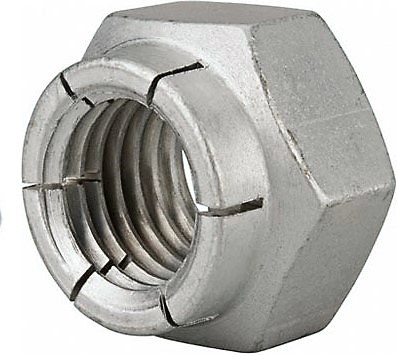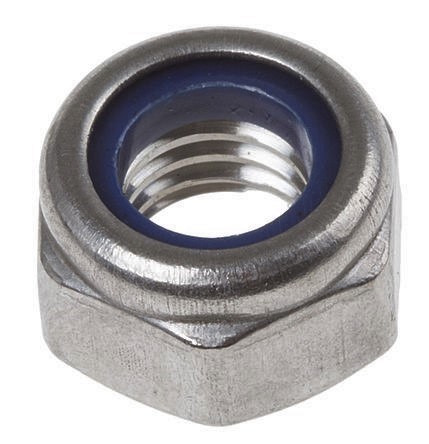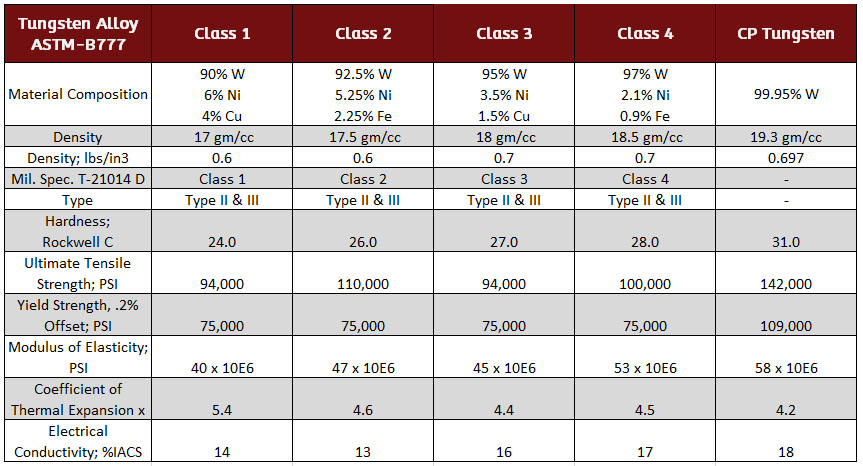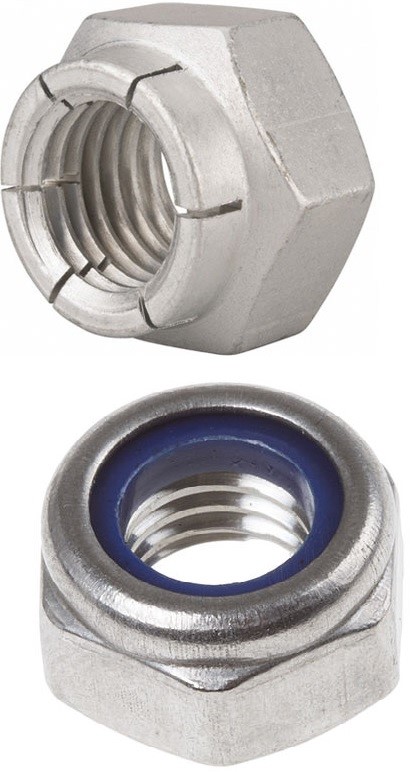Ultra-high density & high temperature / strength stability
- Very high density of 19.3 gm/cc
- Radiopaque to x-rays and other radiation
- High strength at extreme high temperatures (vacuum)
- Excellent corrosion resistance
- Mechanical properties of tungsten lock nuts
- Tungsten material datasheet
Tungsten lock nuts are known for their extreme high density; because of this unique attribute, they are often used for balancing rotating parts. Tungsten’s high mass also makes these lock nuts radiopaque. This allows tungsten lock nuts to block radiation and show up well on x-rays – even better than lead. Another unique attribute of tungsten is its extrmely high melting point of 3420°C. The high temperature stability of tungsten lock nuts make them ideal for some of the hottest vacuum furnace environments. Beyond their high mass and temperature stability, tungsten nuts are also very corrosion resistant.
Tungsten lock nuts are usually made from tungsten alloys per ASTM B777, and range from 90% to 97% pure tungsten, alloyed with nickel and copper or nickel and iron. Nuts can also be made from Commercially Pure (CP) Tungsten.
Applications
- The aerospace industry depends on the tungsten nuts for their combination of high density and mechanical strength which allows them to reduce the physical size of components, offering greater control of weight distribution for propellers, inertial systems and fluid control systems to name a few.
- The heat treating / furnace industry uses tungsten lock nuts in high temperature vacuum furnaces due to tungstens great high temperature strength & stability.
- The oil & gas industry uses tungsten nuts for radiation shielding properties to protect equipment used in oil and gas detection, as well as down hole logging for density and ability to withstand intense hydrostatic pressure
- Tungsten lock nuts also play a role in the medical community for their low magnetic properties as well as their radiopaque properties.
Resources: Tungsten Torque Specs
Tungsten Nuts: Hex Nuts
Tungsten Locknut Features and Beneifts
A tungsten locknut resists loosening from vibrations and torque. One of the most common styles is a prevailing torque locknut. This kind of tungsten locknut has a prevailing torque feature which deforms elastically, preventing it from freely spinning like a standard nut.
The two most common and reliable forms of prevailing torque locknuts are the flexloc style and the polymer insert lock nut. A tungsten flexloc nut is all-metal in composition with a segmented collar that creates six “locking fingers,” that act as a spring. Tungsten polymer insert lock nuts are often referred to as nylon insert locknuts, although various high performance polymers can be used for the screw threads to “bite into.” Both flexlock and polymer insert locknuts are available in both hexagonal and 12 point configurations.
All Metal Flexloc Lock Nut |  Polymer/Nylon Insert Lock Nut Polymer/Nylon Insert Lock Nut |
|
|
Other all metal lock nuts available include the tungsten stover and elliptical styles. Though these styles are often a cheaper initial cost, they are less reliable than the flexloc style. As these styles delivering less prevailing torque cycles and often result in more failures, the flexloc style is a better investment for both reliability and cost savings.
Tungsten Chemistry & Specifications
Tungsten Specifications: ASTM B777, Mil Spec T-21014D


